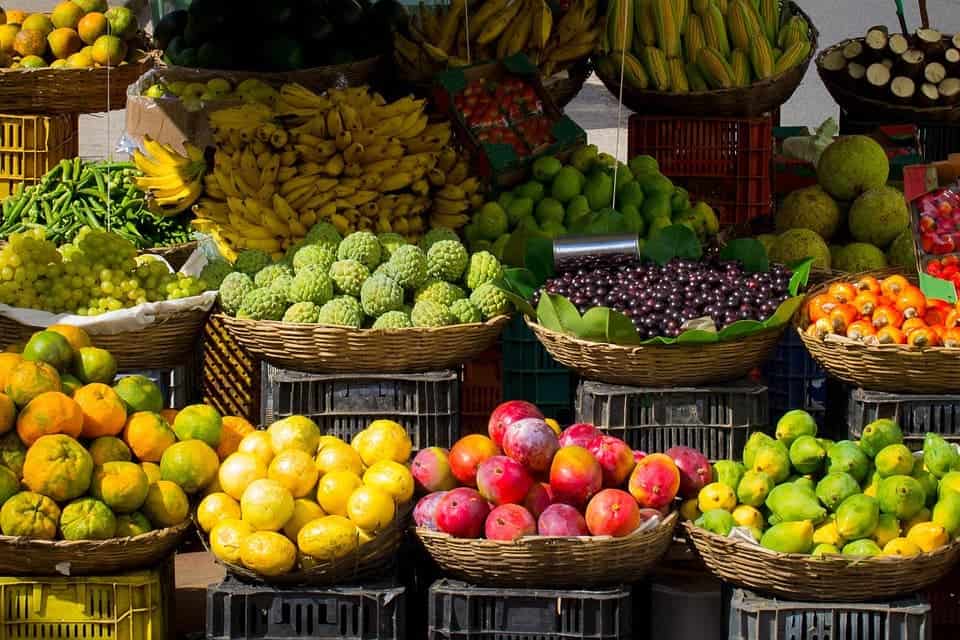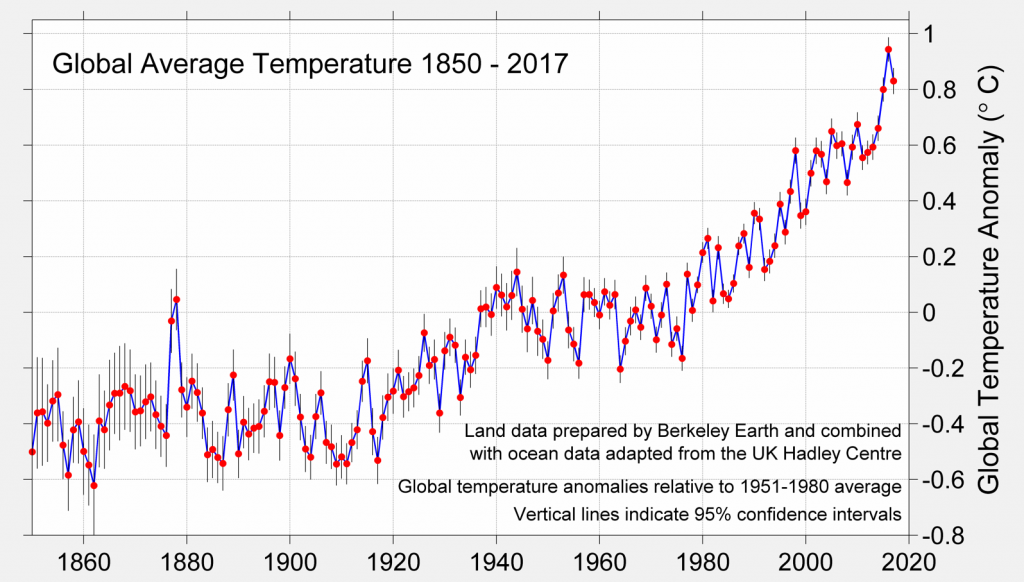A shorthand of the terms ‘biological diversity’, biodiversity refers to the variety of life, in all its forms and all its levels, on Earth. But why do we need biodiversity? Can’t we just have a planet populated solely with humans and those few plants and animals that are tasty?

We probably could, for a few days — then everything would grind to a halt (i.e. everything dies). Let’s see why.
Levels of biodiversity
In general, biodiversity is considered at three (progressively-wider) levels: genetic diversity, species diversity, and ecosystem diversity.
Genetic diversity refers to the level of genetic variety within a single species. While individuals of the same species are very similar from a genetic point of view, there’s also surprising variation between them. Individuals can show genetic differences between one another, as well as whole groups or populations. For example, two sparrows in New York will be a little different, genetically speaking. The differences between a sparrow in London and one in New York, however, would be much more pronounced.
Not all groups have the same degree of genetic diversity. For example, kangaroos come from a relatively recent evolutionary line, and are thus pretty similar from a genetic standpoint. Dasyurids, a group of carnivorous marsupials that includes the Tasmanian Devil, the Numbat, and quolls, come from a more ancient lineage and are far more diverse (as they’ve had more time to develop).

Species diversity refers to the number of different species that live in a particular area or habitat. Some habitats harbor a lot of species diversity — mountain ranges or coral reefs come to mind. Others, such as salt flats or heavily polluted areas that aren’t very nice places to live in, have very poor diversity.
The world might seem to be bursting at the seams with life, but it’s actually not that diverse a place; unless you count invertebrates. Invertebrates are animals that lack a spine and make up about 99% of all animal species. The group includes crabs, snails, worms, corals, and sea stars, but is overwhelmingly represented by insects. The good news, however, is that insects are surprisingly adaptable and versatile and end up fulfilling many vital ecosystem roles (more on that later).
Ecosystem diversity represents the variety of different ecosystems in a given area. An easy way to think of ecosystems is to imagine them as natural, local ‘economies’ that are affected by factors pertaining to their physical environment (local climate, precipitation levels, soil composition, etc) and the make-up and interaction of the species that live in said environment. An ecosystem is the product of the organisms interacting with the environment.
What has biodiversity ever done for us?

Image via Pixabay.
You’d literally be dead without it.
One of the things you start to notice when studying biology is that life has a very interesting way of enabling life (the “Gaia hypothesis“). To help you get an idea of what I mean, let’s take a look at early life on Earth.
The first things to ever live around here were simple, microscopic things — bacteria, basically. The first direct evidence of life on Earth hails from around 3.5 billion years ago (fossilized microorganisms found in Apex chert rocks in the Pilbara Craton, Australia), but life likely evolved a bit earlier. It probably wasn’t very easy to make a living on Earth back in the day, however; these organisms likely lived in colonies around hydrothermal vents. These vents put out heat and chemical compounds, which the bacteria could capture to eke out energy from. This type of metabolism, which is known as chemolithoautotrophic (which means “self-feeding on chemicals and rocks), generates very little energy compared to oxygen respiration.

Image credits Schmidt Ocean Institute via USGS.
Humans can exist in the form we have today because, unlike those early bacteria, we have ample access to oxygen to breathe. That oxygen, however, wasn’t always there — bacteria and plants released it into the atmosphere over the course of geological time. In other words, we can exist as we do today because life, over millions and billions of years, worked to create the conditions we live in.
But… that’s just life doing its thing, right? How does biodiversity fit into this story? Well, the short of it is that biodiversity is what keeps life and ecosystems going — life as we know it today requires a baseline of biodiversity to work.
Why biodiversity is the spice of life

Diversity is life’s insurance policy. As a rule of thumb, the more genetically-diverse a species is, the better its chances of not going extinct; ecosystems with greater species diversity are more resilient to shocks such as invasive species, climate shifts, or meteorites. Areas with greater ecosystem diversity can take more ‘damage’ (lose more ecosystems) before things break down completely. Let’s expand on each of those points independently.
First, consider the banana. Chances are that every banana you’ve even gulped down is, on a genetic level, exactly the same as every other banana you’ve ever eaten. That’s because the banana cultivar you’re overwhelmingly likely to encounter is a Cavendish banana (95% of all commercially-available bananas). All Cavendish bananas are clones of one another. The plants are propagated through the use of suckers, lateral offshoots of a parent plant that are cut and planted in the soil.
The reason Cavendish is so prominent today is that the original (and better-tasting) banana cultivar, the Gros Michel, was virtually wiped clean away from South America by the Panama disease. Why did this fungus-driven disease have such an easy time destroying the Gros Michel? Well, just like the Cavendish, Gros Michel bananas were basically clones of one another — so a pathogen that could infect and kill one plant could infect and kill all its species. The only reason the Gros Michel variety isn’t extinct right now is that some cultures survived in other areas of the world where the Panama disease hasn’t (as of now) reached. This example illustrates why insufficient genetic diversity can spell doom for a species.

Image credits Scot Nelson / Flickr.
To understand why species diversity matters, we have to talk about ecological niches. Just like you have a job (if not, good luck), your neighbor has a job, and so on, each species has a ‘job’ it performs for the ecosystem. We call these jobs ‘ecological niches’. If the job doesn’t get done, the whole thing starts to crack. If enough jobs don’t get done, the local economy (ecosystem) collapses completely.
Let’s take pollinators as an example. They zip this way and that carrying pollen, thus fertilizing plants and crops, and indirectly helping to grow things for everyone to eat. If a single species is performing this role, and it gets wiped out for some reason, a critical ecosystem ‘service’ or ‘function’ (pollination) won’t be performed. Some, like plants, act as suppliers of food; herbivores harvest and concentrate nutrients and energy from plants, and carnivores keep herbivore numbers in check so they don’t overwhelm the plants. Bacteria and fungi make sure all that food keeps being recirculated in the ecosystems through decomposition (rot).
In ecosystems with high species diversity, several species compete or complement each other over the same niche. So if one pollinator species can’t perform the task, another one is there to pick up the slack. This makes the ecosystem as a whole more stable and resilient.

Image via Pixabay.
The next level is ecosystem diversity. Just like different species intermingle in an ecosystem and have particular roles, ecosystems interact with one another. If you think of the Earth as a huge ecosystem, then the sum of each of these ‘local’ ecosystems needs to perform a certain threshold of jobs (ecosystem services) for the whole system to be viable. For example, if there aren’t enough net-oxygen-generating ecosystems to supply all the demand for the gas, animals will start dying left and right. If there aren’t enough ecosystems to filter water, recycle nutrients, suck up carbon dioxide or other pollutants, and everything else that life needs, then the Earth will be downsizing on said life.
Where climate warming comes in
Species go extinct all the time, that’s just how life rolls. Generally, however, this natural or baseline rate of extinction is easily absorbed by ecosystems at large. Existing species cover now-free niches, or new species altogether evolve to exploit the opportunity.
From a biodiversity point of view, the issue with climate change is how fast it’s driving species extinct. Species go extinct when they fail to adapt to their environment or their competition. While natural processes can drive pretty fast and dramatic changes (think of how a meteorite impact killed the dinos and made mammals reign), most of the time they’re pretty gradual, which gives species some time to adapt or evolve to suit the present conditions. Natural changes, in general, also tend to impact a relatively limited area.

Image credits Berkeley Earth.
Man-made climate warming is very fast — blisteringly fast from a geological point of view. The root of the issue is that our emissions are changing environments (this is the thing life needs to adapt to) way, way, way faster than biological evolution works. It also impacts the Earth in its entirety, affecting all ecosystems at the same time — so there aren’t any ‘unburdened’ ones to pick up the slack for those that are struggling since they’re all struggling.
To push the metaphor full circle, we’re closing the jobs in manufacturing and opening up new ones only in programming in the equivalent of a few hours, but programming school takes a few years to complete and very few people already know how to do it. Our way of life is driving the global economy — all of it — into a deep recession. The risk is that, by the time we take action to stop it, all the species that know how to manufacture the things we need to survive will be dead.
Hopefully, this handy guide helps you get a better idea of what biodiversity is and why it’s important. The world is a beautiful place, but we need to understand that it’s built on very complex and often fragile relationships. We need to make room and opportunity for these relationships to unfold, or we risk the world adapting to us — and wake up in a world that we’re no longer adapted for.
And we all know what nature likes to do to the species that can’t adapt, don’t we?






